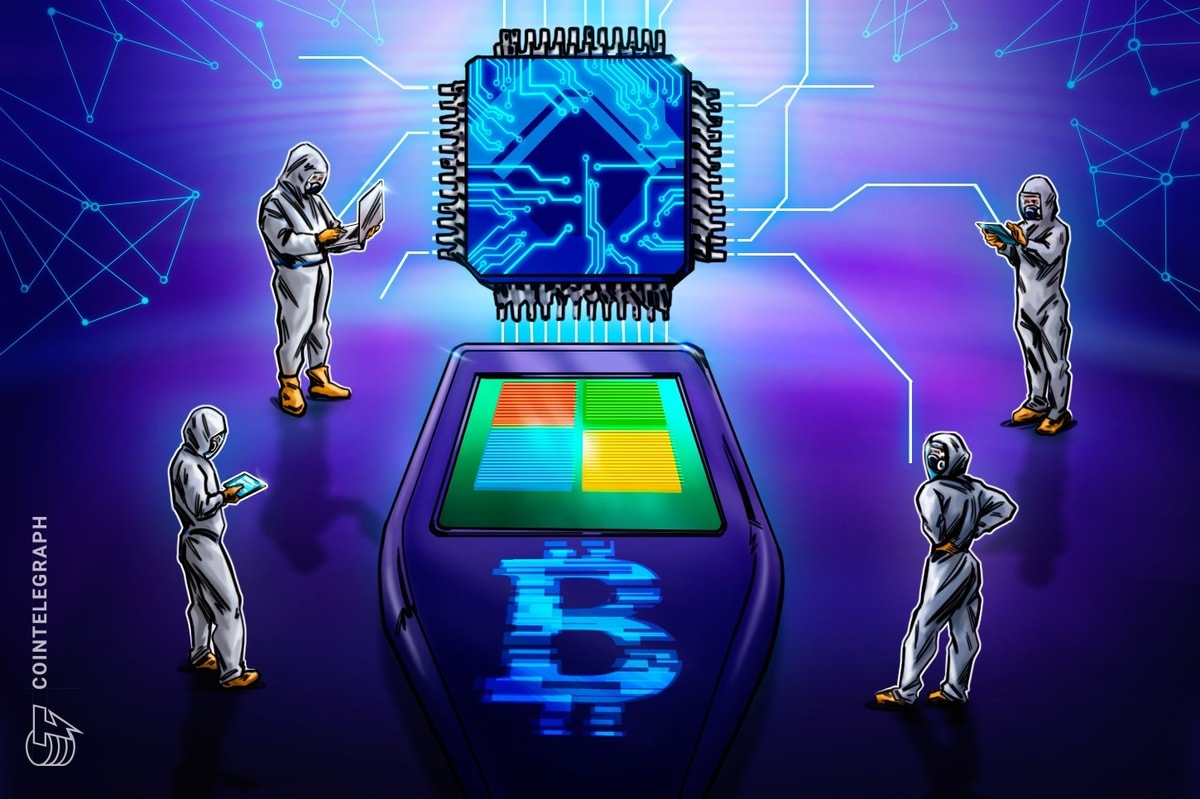Microsoft’s new quantum computing chip could push up the timeline to make Bitcoin quantum-resistant, according to Bitcoin exchange River.
As reported by Cointelegraph, Microsoft launched its quantum computing (QC) chip Majorana 1 on Feb. 19, joining a suite of other companies pursuing the technology, including Google, which unveiled chip Willow in December.
In a Feb. 20 post on X, River said while a crypto-threatening quantum computing breakthrough is still many years away, the new chip may have shortened that timeline.
“The Majorana 1 chip is far from that scale now, but could reach the 1 million mark by 2027-2029 [...] When ran for several days to weeks, a 1-million qubit QC could potentially crack Bitcoin addresses via a long-range attack,” it said.
Source: River
“This breakthrough shortens the timeline to make Bitcoin quantum-resistant. Even if it’s a decade away, addressing vulnerabilities early is crucial,” the platform said.
Quantum threat is overblown, say critics
Fears that quantum computing could lead to an all-you-can-eat buffet for crypto criminals aren’t new, but critics of the theory argue it won’t be an issue in the future.
Source: River
One argument is that a cryptography-cracking quantum computer would likely be aimed at banking giants and other traditional targets well before Bitcoin.
In total, data platform Statista estimates all the world’s banks held more than $188 trillion dollars in assets as of 2023. Crypto market capitalization is currently just a fraction of that at $3.2 trillion, according to CoinMarketCap.
Source: FoxBrady
Another argument is that advancements in Quantum computing could used just as easily to strengthen the Bitcoin network.
Adam Back, a notable cryptographer in the industry, says post-quantum is still several decades out, and he expects post-quantum signature research will produce well-reviewed, more compact signatures, which Bitcoin can add to the network.
Some suggest it could even be a hundred years before quantum computing even becomes a threat.
Bitcoin advocate Adrian Morris said in a Feb. 20 post to X that quantum computing is “barely a viable technology,” with “major issues” around thermodynamics, memory and persisting calculations.
Source: Adrian Morris
Meanwhile, co-founder of The Investor’s Podcast Network, Preston Pysh, said the community is already working on a solution, with BIP-360 as “the main one being proposed, which he says “could be rolled out via a soft fork.”
BIP-360 proposes transitioning Bitcoin to a quantum-resistant structure by replacing vulnerable signature methods.
Related: Could quantum computing threaten Satoshi Nakamoto’s 1 million Bitcoin?
Seemingly in response, Alexander Leishman, CEO of River, agreed that a quantum threat to Bitcoin is not a near-term problem, though he said the argument that the entire banking system could break before Bitcoin is flawed.
Source: Alexander Leishman
Leishman argued that centralized financial institutions implement many layers of security beyond just using public key cryptography, such as symmetric password authentication and manual controls around large movements of funds.
Meanwhile, a Bitcoin quantum attack would only need the attacker to know the Bitcoin public key.
Magazine: Bitcoin vs. the quantum computer threat: Timeline and solutions (2025–2035)










